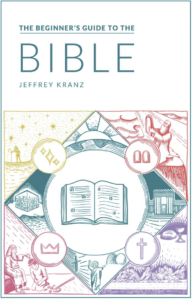Jesus’ closest followers were the apostles, known as “the Twelve.” As leaders in the early church, each of the apostles played an integral role in spreading the church throughout the ancient world, and many of them died as a direct result of their ministry efforts, often at the hands of the people they were called to reach.
In the Bible, fourteen people are considered apostles—the original members of the Twelve, plus Matthias (who was chosen to replace Judas Iscariot), and Paul (the apostle to the Gentiles). They were all real people who lived and died in the first century AD.
Only two of their deaths are recorded in the Bible (James and Judas Iscariot). Most of what we know about the other apostles’ deaths come from ancient Christian writers and church tradition, and there are often multiple accounts of where and how they died. It’s commonly believed that only one apostle died of natural causes (John), but some accounts suggest there may have been others who weren’t martyred. Traditionally, each apostle has been portrayed in art holding or wearing an icon associated with their death (Bartholomew’s is pretty creepy by the way).
In this article, we’ll look at what we know and don’t know about the deaths of each apostle, drawing from the Bible, history, early Christian writers, and legend to give you the full range of possibilities. For most of the apostles, the dates of their deaths are unknown or simply estimates, though some have more definitive timelines. Sometimes it can be difficult to trace traditions back to their original sources. When possible, we’ve done that for you.
Is there a particular apostle you want to learn about? Use the links below to skip ahead:
- Simon Peter
- Andrew
- James
- John
- Philip
- Bartholomew
- Thomas
- Matthew
- James son of Alphaeus
- Jude
- Simon the Zealot
- Judas Iscariot
- Matthias
- Paul
Let’s begin with a quick look at all the ways the apostles may have died according to Scripture, tradition, and legend.
How did Peter die?
Simon, also known as Peter, was one of the most prominent disciples of Jesus Christ, and one of the most important leaders of the early Christian church (Catholic tradition even claims he was the first pope), so it shouldn’t come as a surprise that he suffered a fate similar to Jesus’.
Peter was crucified, but with a twist: they hung his cross upside down.
According to church tradition, Peter was killed by Emperor Nero around 64 AD, after the Great Fire of Rome, which he famously blamed Christians for starting. A second-century apocryphal text called Acts of Peter was the first account claiming Peter was crucified upside down, which was allegedly because he didn’t consider himself worthy of dying the same death as Jesus.
At the end of the Gospel of John, Jesus predicts Peter’s death when he tells him, “when you are old you will stretch out your hands, and someone else will dress you and lead you where you do not want to go” (John 21:18). In case you missed that, John remarks, “Jesus said this to indicate the kind of death by which Peter would glorify God” (John 21:19).
Clement of Rome, an early church father who personally knew the apostles, wrote in his famous letter known as 1 Clement, “Let us take the noble examples of our own generation. Through jealousy and envy the greatest and most just pillars of the Church were persecuted, and came even unto death. . . . Peter, through unjust envy, endured not one or two but many labours, and at last, having delivered his testimony, departed unto the place of glory due to him.”
Eusebius, the father of church history, quotes Origen (a second/third-century scholar) as saying, “Peter was crucified at Rome with his head downwards, as he himself had desired to suffer” (Church History).
Roman soldiers had a reputation for experimenting with variations of crucifixion. According to the Jewish-Roman historian Josephus, who lived in the first century, Roman soldiers didn’t always crucify people “right-side up,” and they tried different positions for entertainment (Jewish War).
How did Andrew die?
Peter’s brother Andrew allegedly suffered a similar death, but the origin of this tradition isn’t as reliable.
According to tradition, Andrew was martyred by crucifixion in the Greek city of Patras around 60 AD. Like his brother, Peter, Andrew didn’t consider himself worthy to die in the same way as Jesus, and so he was bound—not nailed—to a cross which was hung in an X shape instead of a T. For this reason, an X-shaped cross is sometimes referred to as Saint Andrew’s Cross.
Unfortunately, the origin of this narrative isn’t exactly trustworthy. It comes from an apocryphal book called Acts of Andrew, which also includes numerous supernatural accounts of Andrew’s miracles—including a claim that he preached for three days straight as he hung on the cross—and it didn’t emerge until decades, maybe even centuries after his death.
According to Acts of Andrew, part of Andrew’s three-day sermon (which he gave while he was dying) involved praising the cross as a symbol of Christ’s beautiful redemption:
“Hail, O Cross, inaugurated by the Body of Christ and adorned with his limbs as though they were precious pearls. Before the Lord mounted you, you inspired an earthly fear. Now, instead, endowed with heavenly love, you are accepted as a gift.
“Believers know of the great joy that you possess, and of the multitude of gifts you have prepared. I come to you, therefore, confident and joyful, so that you too may receive me exultant as a disciple of the One who was hung upon you…. O blessed Cross, clothed in the majesty and beauty of the Lord’s limbs!… Take me, carry me far from men, and restore me to my Teacher, so that, through you, the one who redeemed me by you, may receive me. Hail, O Cross; yes, hail indeed!”
The early church was rightfully suspicious of Acts of Andrew, but it seems that church tradition supported a similar account of his death. In the entry for Andrew, Foxe’s Book of Martyrs says:
“He preached the gospel to many Asiatic nations; but on his arrival at Edessa he was taken and crucified on a cross, the two ends of which were fixed transversely in the ground. Hence the derivation of the term, St. Andrew’s Cross.”
How did James die?
Saint James was the first of Jesus’ apostles to die for following him, and he’s one of the only two apostles whose death is recorded in the Bible. (The other one is Judas Iscariot.) He was executed with a sword. We read about his death in Acts 12:
“It was about this time that King Herod arrested some who belonged to the church, intending to persecute them. He had James, the brother of John, put to death with the sword.” —Acts 12:1–2
King Herod was eager to win the favor of the Jews. Since the Jews were very interested in preventing Christianity from spreading, he believed persecuting Christians would please his Jewish subjects—and it did (Acts 12:3). Scholars generally believe James was killed in Jerusalem in 44 AD.
In the fourth century, Eusebius of Caesarea quoted Clement of Alexandria about James’ death:
“It appears that the guard who brought him into court was so moved when he saw him testify that he confessed that he, too, was a Christian. So they were both taken away together, and on the way he asked James to forgive him. James thought for a moment, then he said ‘I wish you peace,’ and kissed him. So both were beheaded at the same time.” —Eusebius of Caesarea, Church History
Clement of Alexandria was born a little over 100 years after James died, but it’s very possible that he had access to accounts and records that didn’t survive. And while there are plenty of legends surrounding famous Christians, it’s not hard to imagine this being true.
James was the first of the apostles who “drank the cup Jesus drank” (Mark 10:39).
How did John die?
Before Jesus died, he entrusted his mother Mary to the beloved disciple (John 19:26–27), who is most widely believed to be John.
When Mary died, John allegedly went to Ephesus, where he wrote his three epistles. From there, he was exiled to the island of Patmos for preaching the gospel, where he received the revelation from Christ and wrote the Book of Revelation. Eventually, he made it back to Ephesus and died an ordinary death sometime after 98 AD.
(This tradition assumes that John the Apostle and John of Patmos are the same person, and scholars aren’t sure if that’s the case.)
Tertullian, a Christian writer from the late second and early third century, wrote that before the Romans banished John, they brought him into a coliseum and dunked him in a vat of boiling oil. When he emerged unharmed, the entire coliseum converted to Christianity. This is why some iconography shows John in a vat of boiling oil.
 The Beginner’s Guide to the Bible gives you an overview of what the Bible is, what it’s for, and what it’s all about. You’ll walk away from it with enough knowledge to have a thoughtful conversation about the Bible with a pastor, an atheist, or anyone else.
The Beginner’s Guide to the Bible gives you an overview of what the Bible is, what it’s for, and what it’s all about. You’ll walk away from it with enough knowledge to have a thoughtful conversation about the Bible with a pastor, an atheist, or anyone else.
How did Philip die?
Very early on, Christians confused Philip the Apostle with Philip the Evangelist from the Book of Acts. So we can’t say for sure which accounts are referring to which Philip. To make matters worse, there are conflicting stories.
Basically, we don’t know how Philip died. But there are plenty of possibilities. One record says he died of natural causes. Another says he was beheaded. Or stoned to death. Or crucified upside down. What we do know is that he died sometime in the first century, possibly around 80 AD.
Most of the earliest traditions seem to point to him being martyred in the ancient Greek city of Hierapolis. Polycrates of Ephesus wrote in a letter to Pope Victor, “I speak of Philip, one of the twelve apostles, who is laid to rest at Hierapolis. . .”
Caius the Presbyter (a Christian writer in the third century) wrote: “And after this there were four prophetesses, daughters of Philip, at Hierapolis in Asia. Their tomb is there, and that, too, of their father.” But this appears to be talking about Philip the Evangelist, who had “four unmarried daughters, who prophesied” (Acts 21:8–9). It’s unlikely that both Philips had four prophesying daughters.
The Acts of Philip provides the earliest, most detailed account of his martyrdom, but again, it’s hard to say how much we can trust it. Philip supposedly converted a proconsul’s wife, which angered the proconsul enough to have him and Bartholomew crucified upside down. While hanging there, Philip preached, and the crowd was moved to release them. He told them to free Bartholomew, but not to take him down.
How did Bartholomew die?
Pretty gross, right? But there are other records of his death, too.
Foxe’s Book of Martyrs claims that in India, “He was at length cruelly beaten and then crucified by the impatient idolaters.”
The Golden Legend notes several accounts:
“There be divers opinions of the manner of his passion. For the blessed Dorotheus saith that he was crucified, and saith also: Bartholomew preached to men of India, and delivered to them the gospel after Matthew in their proper tongue. He died in Alban, a city of great Armenia, crucified the head downward. St. Theoderus saith that he was flayed, and it is read in many books that he was beheaded only. And this contrariety may be assoiled in this manner, that some say that he was crucified and was taken down ere he died, and for to have greater torment he was flayed and at the last beheaded.”
Another tradition claims he was beaten unconscious and drowned in the ocean.
However Bartholomew died, it was probably pretty gruesome. But while they may not agree on the manner of his death, all of the traditions connect Bartholomew’s death to his ministry. Now, if only they could all agree on where that was.
How did Thomas die?
The Acts of Thomas says he was martyred in Mylapore, India, where he was stabbed with spears. Syrian Christian tradition specifies Thomas was martyred in Mylapore on July 3, 72 AD, noting that he was killed with a spear. An early ecclesiastical calendar entry reads:
“3 July, St. Thomas who was pierced with a lance in ‘India’.”
No other tradition exists regarding his death.
How did Matthew die?
“But neither will this utterance be found to be spoken universally; for all the saved have confessed with the confession made by the voice, and departed. Of whom are Matthew, Philip, Thomas, Levi, and many others.” —Stromata
But while earlier records are often assumed to be more reliable (because they’re closer to when the events actually happened), most scholars don’t accept Heracleon’s account today. All the other early records of Matthew’s death claim he was martyred, but they disagree about how and where it happened. The early church fathers said he was burned, stoned, stabbed, or beheaded.
In John Foxe’s famous Book of Martyrs (which rounded up the most popular traditions known in the sixteenth century), the entry for Matthew states:
“The scene of his labors was Parthia, and Ethiopia, in which latter country he suffered martyrdom, being slain with a halberd in the city of Nadabah, A.D. 60.”
How did James son of Alphaeus die?
Tradition tells us that James the Just was pushed from the pinnacle of a temple he was preaching at, and then beaten with a fuller’s club and stoned to death. In art, James son of Alphaeus is typically portrayed with a fuller’s club, reflecting the church’s assumption that he was the same person as James the Just.
However, the tradition which claims James son of Alphaeus preached in Egypt says he was crucified in the city of Ostrakine.
Hippolytus, a theologian who lived in the second and third centuries, allegedly recorded James’ death in On the Twelve Apostles of Christ:
“And James the son of Alphaeus, when preaching in Jerusalem was stoned to death by the Jews, and was buried there beside the temple.”
This is the same death tradition ascribes to James, brother of Jesus, but scholars have little reason to trust On the Twelve Apostles of Christ. The text wasn’t discovered until the nineteenth century, and most believe it’s pseudepigrapha (writing that falsely claims to be written by someone).
How did Jude die?
According to The Golden Legend, Simon and Jude command demons to come out of idols and destroy their own images. Then the religious leaders kill Simon and Jude:
“And when the bishops saw this, they ran upon the apostles and hewed them to death anon. And that same hour, which was right fair weather, came so great thunder and lightning that the temple was smitten in three, and the two enchanters were turned into coals by the stroke of thunder. And the king bare the bodies of the apostles into his city, and did do make a church of marvellous greatness in the honour of them.”
In art, Jude is often portrayed holding an axe to represent this tradition.
How did Simon the Zealot die?
- In the fifth century, Moses of Chorene wrote that Simon the Zealot was martyred in the Kingdom of Iberia.
- The Golden Legend says he was martyred in Persia in 65 AD.
- Ethiopian Christians believe he was crucified in Samaria.
- Another account says he was crucified in 61 AD in Britain.
- In the sixteenth century, Justus Lipsius claimed he was sawed in half.
- Eastern tradition claims he died of old age in Edessa.
So maybe he was a martyr. And maybe not. But he probably was.
How did Judas Iscariot die?
The Book of Acts and the Gospel of Matthew each record a version of Judas’ death. Matthew records that Judas hung himself immediately after the chief priests refused to take their money back:
“So Judas threw the money into the temple and left. Then he went away and hanged himself.” —Matthew 27:5
The chief priests then used the money to buy a field, which Matthew connects to prophecies from Zechariah and Jeremiah:
“The chief priests picked up the coins and said, ‘It is against the law to put this into the treasury, since it is blood money.’ So they decided to use the money to buy the potter’s field as a burial place for foreigners. That is why it has been called the Field of Blood to this day. Then what was spoken by Jeremiah the prophet was fulfilled: ‘They took the thirty pieces of silver, the price set on him by the people of Israel, and they used them to buy the potter’s field, as the Lord commanded me.’” —Matthew 27:6–10
Interestingly, Acts (traditionally attributed to Saint Luke) gives a different account:
“(With the payment he received for his wickedness, Judas bought a field; there he fell headlong, his body burst open and all his intestines spilled out. Everyone in Jerusalem heard about this, so they called that field in their language Akeldama, that is, Field of Blood.)” —Acts 1:18–19
Luke’s account of Judas’ death doesn’t necessarily contradict Matthew’s. He could simply be referring to something that happened after Judas hung himself. But that still leaves us with the question of who bought the field—Judas, or the chief priests? And they appear to have different reasons for why the field was called the Field of Blood.
Matthew’s account is the only one that tells us Judas felt remorse, and he directly connects that remorse to Judas’ suicide. Luke’s account almost seems to paint a picture of Judas as being “doomed to destruction,” as though a sudden gruesome death was simply his fate for betraying Jesus.
Still, both accounts appear to be in agreement that Judas died around the same time as Jesus. And it certainly wasn’t from old age.
How did Matthias die?
Matthias is the most obscure apostle, so it shouldn’t be a surprise that we can’t be very sure what he did or how he died.
Some traditions claim he was stoned at the end of his ministry to cannibals in Aethiopia (Georgia). Another that he was stoned by Jews in Jerusalem and then beheaded. Hippolytus of Rome records that he died in Jerusalem of old age.
How did Paul die?
His death isn’t recorded in the Bible, but it’s one of the more well-documented martyrdoms in the early church. Numerous early church fathers wrote that he was beheaded by emperor Nero, which would mean it had to be sometime before 68 AD.
Clement of Rome provided the earliest surviving record of Paul’s death in his letter to the Corinthians, where he mentions that Paul and Peter were martyred.
An apocryphal work from the second century known as The Acts of Paul says that Nero had Paul decapitated. And in 200 AD, Tertullian wrote that Paul’s death was like John the Baptist’s (who was beheaded). Other early Christian writers support these claims and provide some additional details like where it happened (Rome) and where he was buried (the Ostian Way at Rome).
Learn more about the apostles
We explore the apostles in greater detail in Who Were the 12 Apostles? The Beginner’s Guide, and you can read it for free—you don’t even have to give us your email.





































